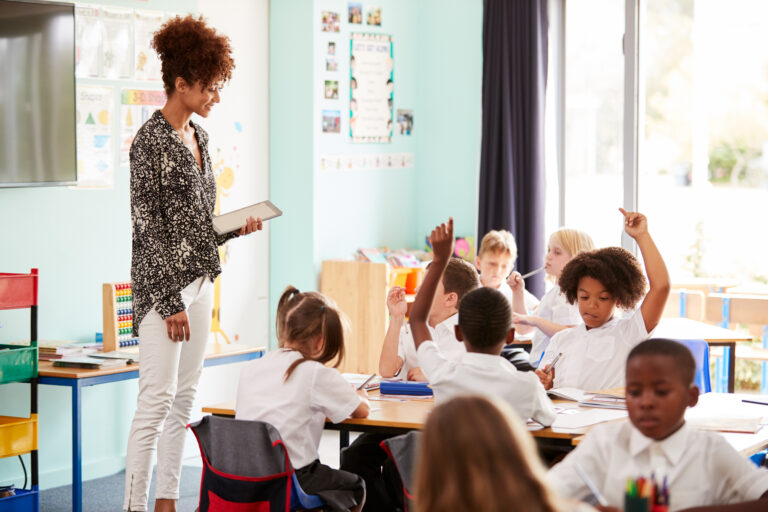30 Seconds to Success: Boost Classroom Engagement
Want to create a sense of belonging in your classroom for every student, every day? Want a strategy that won’t require any more of your already limited time? Positive narration, simply noticing aloud the positive actions and behaviors of your students, ensures students are seen and acknowledged.
What do you typically do after you give directions – I bet you start looking around to make sure everyone is getting to work. Intentionally adding the practice of positive narration to that 30-second scan is all it takes to build serious momentum and strengthen your relationships with your students.
It’s so easy! After giving directions, positively acknowledge students who meet expectations, even if it’s just partly. And keep it simple by using a three-part statement. Mae is silently writing in her journal. Kingston and Rohan are using their level 2 voices to discuss the main idea. Danika is using walking feet.
Positive narration has the potential to impact every student, regardless of their learning style, background, or behavioral tendencies. Let’s consider the following “types of students”:
Student who is often disruptive…
For this student, positive narration can be transformative. By acknowledging positive behavior and effort, teachers can redirect disruptive behavior and encourage a more constructive approach to learning. Imagine Jeremiah is chatty with his neighbors, but always gets the work done. “Jeremiah is completing problem 3. Alex is working silently.” Jeremiah feels seen in a positive light and is provided a reminder to work silently, offering an opportunity to self-regulate and practice self-discipline.
Student who is often shy…
Shy students struggle to engage actively, yet often are such keen observers with tremendous insight. Anxiety can make it difficult for a student who is shy to feel safe enough to engage. Positive narration provides them with the assurance that their contributions are valued, helping to boost their confidence and sense of belonging in the classroom.
Student who is dealing with personal challenges…
Students dealing with personal challenges can benefit significantly from positive narration. By recognizing their strengths and efforts, teachers can provide much-needed support and encouragement, fostering resilience and a positive mindset.
Students who put a lot of pressure on themselves…
Some students may experience intense pressure to excel. Positive narration helps alleviate their anxiety by affirming their progress and efforts, creating a balanced perspective on their achievements.
Students who daydream…
Daydreaming students may struggle with focus and self-discipline. Positive narration serves as a gentle reminder and support mechanism, guiding them toward improved self-regulation and concentration.
Students who are English Language Learners…
For English Language Learners, positive narration can bridge linguistic and cultural barriers, providing essential encouragement and support as they navigate the complexities of language acquisition. It also provides them with a tremendous opportunity to build their English vocabulary.
In summary, the practice of positive narration empowers teachers to create an inclusive and supportive learning environment where every student is recognized, valued, and encouraged. By acknowledging and reinforcing positive behaviors and efforts, teachers can effectively reach every student, every day, fostering a culture of growth, resilience, and mutual respect.
By: Jackie Surratt, CT3 Managing Associate
Check out CT3 Education programs such as No-Nonsense Nurturer, Real Time Teacher Coaching, and Real Time Leadership Coaching to find out more about Professional Development for Teachers and Leaders, classroom management strategies, and building relationships with students and their families.
Category: Coaching, Education, No-Nonsense Nurturer, Real Time Teacher Coaching, Teaching


